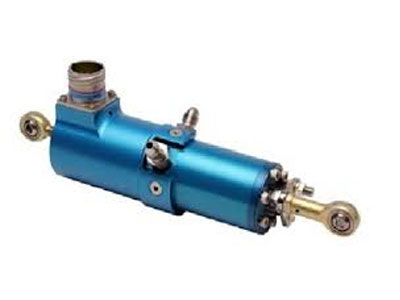What Are Pneumatic Valves?
Key Takeaway
Pneumatic valves are devices used to control the flow of compressed air or gases within a system. These valves are also known as directional control valves. They regulate, direct, or block the flow of air to different parts of the system, playing a crucial role in controlling actuators, grippers, and other devices.
Common types of pneumatic valves include directional control valves, which direct airflow through different passages; flow control valves, which regulate the speed of pneumatic cylinders by adjusting airflow; and pneumatic solenoid valves, which use an electromechanical solenoid to control the flow of air. Pneumatic valves are efficient, cost-effective, and widely used in industries like manufacturing, automation, and robotics. They are essential for regulating cylinders, actuators, and maintaining system pressure.
Introduction to Pneumatic Valves and Their Role
Pneumatic valves are critical components in pneumatic systems, responsible for controlling and directing the flow of compressed air. These devices play a central role in determining how actuators, such as cylinders or motors, perform their tasks. By opening, closing, or regulating airflow, pneumatic valves ensure that the system operates smoothly and efficiently.
The importance of pneumatic valves cannot be overstated in industries relying on automation. From simple tasks like switching air on and off to complex operations requiring precise pressure control, these valves are indispensable. They allow engineers to control motion, force, and speed with accuracy, making them a vital part of modern manufacturing and processing systems.
For a new engineer, understanding the basic role of pneumatic valves is essential. They form the “brain” of a pneumatic system, translating control signals into mechanical actions that drive industrial processes forward.

Key Functions of Pneumatic Valves in Actuation Systems
Pneumatic valves perform several key functions that ensure the effective operation of actuation systems. First and foremost, they control the flow of compressed air, determining when and where the air is directed. This allows actuators like cylinders to perform tasks such as extending, retracting, or holding a position.
Valves also play a role in regulating pressure and flow rate, ensuring that the system operates within its designed parameters. For example, too much pressure can damage components, while insufficient pressure can lead to ineffective performance.
Additionally, pneumatic valves reverse the direction of airflow, enabling bidirectional movement in actuators like double-acting cylinders. This versatility is critical in tasks requiring repetitive motion.
Safety is another important function. Valves can include features such as pressure relief mechanisms to protect the system from overpressure conditions. By performing these functions, pneumatic valves ensure the efficiency, reliability, and safety of pneumatic actuation systems.
Types of Pneumatic Valves Based on Functionality
Pneumatic valves come in various types, each designed for specific functions within a system. The most common types include:
Directional Control Valves: These valves direct the flow of air within the system. They are categorized by the number of ports (inlet, outlet, exhaust) and positions (open, closed, or mid). For instance, a 5/2-way valve is widely used in double-acting cylinders.
Flow Control Valves: These regulate the speed of actuators by controlling the airflow rate. They are essential for applications requiring precise motion control.
Pressure Control Valves: These include relief valves, regulators, and pressure reducers. They ensure that the system operates within safe pressure limits.
Shuttle Valves and Check Valves: Shuttle valves allow air to flow from multiple sources to a single outlet, while check valves ensure unidirectional airflow to prevent backpressure.
Each type of valve is tailored to a specific role, and selecting the right valve is crucial for achieving the desired performance in pneumatic systems.
Components and Design Features of Pneumatic Valves
Pneumatic valves are constructed with several key components, each contributing to their functionality and durability. The body of the valve houses the internal components and is typically made from materials like aluminum, stainless steel, or plastic, chosen based on the application.
The spool or poppet inside the valve directs airflow by opening or closing different passages. These components are actuated using manual levers, solenoids, or pneumatic pilots, depending on the design. Solenoid-operated valves are especially popular in automated systems due to their compatibility with electrical control signals.
Seals are critical for preventing air leaks and ensuring smooth operation. They are made from materials like rubber or silicone, chosen for their compatibility with the operating environment. Ports and connectors provide the interface between the valve and the rest of the pneumatic system, enabling airflow to enter and exit efficiently.
Additional features, such as pressure regulators, flow restrictors, and safety mechanisms, enhance the valve’s performance and adaptability. A well-designed pneumatic valve ensures reliable operation even under challenging industrial conditions.
Applications of Pneumatic Valves in Industrial Processes
Pneumatic valves are indispensable in a wide range of industrial processes. In the manufacturing sector, they are used to control actuators on assembly lines, enabling precise operations like positioning, gripping, and lifting. Their ability to regulate motion with high accuracy ensures efficiency in automated production systems.
In the automotive industry, pneumatic valves control robotic arms and tools used in welding, painting, and assembly. Their responsiveness and reliability make them ideal for repetitive, high-speed tasks.
In pharmaceutical and food processing, valves ensure clean and hygienic operations. For example, flow control valves regulate air used for packaging or transporting delicate products. Safety is paramount in these industries, and pneumatic valves are designed to meet stringent standards.
Pneumatic valves also play a vital role in aerospace and energy sectors, where they are used in testing, simulation, and control systems requiring precision and durability. Their versatility allows them to adapt to various industrial challenges, proving their value in modern automation.
Conclusion
Pneumatic valves are the cornerstone of efficient and reliable pneumatic systems. By controlling airflow, regulating pressure, and ensuring safety, these valves enable the seamless operation of actuators and other components in industrial processes.
From assembly lines to cleanroom environments, pneumatic valves play a vital role in optimizing performance and productivity. Their versatility and adaptability make them essential for a wide range of applications, underlining their importance in modern automation and engineering.

